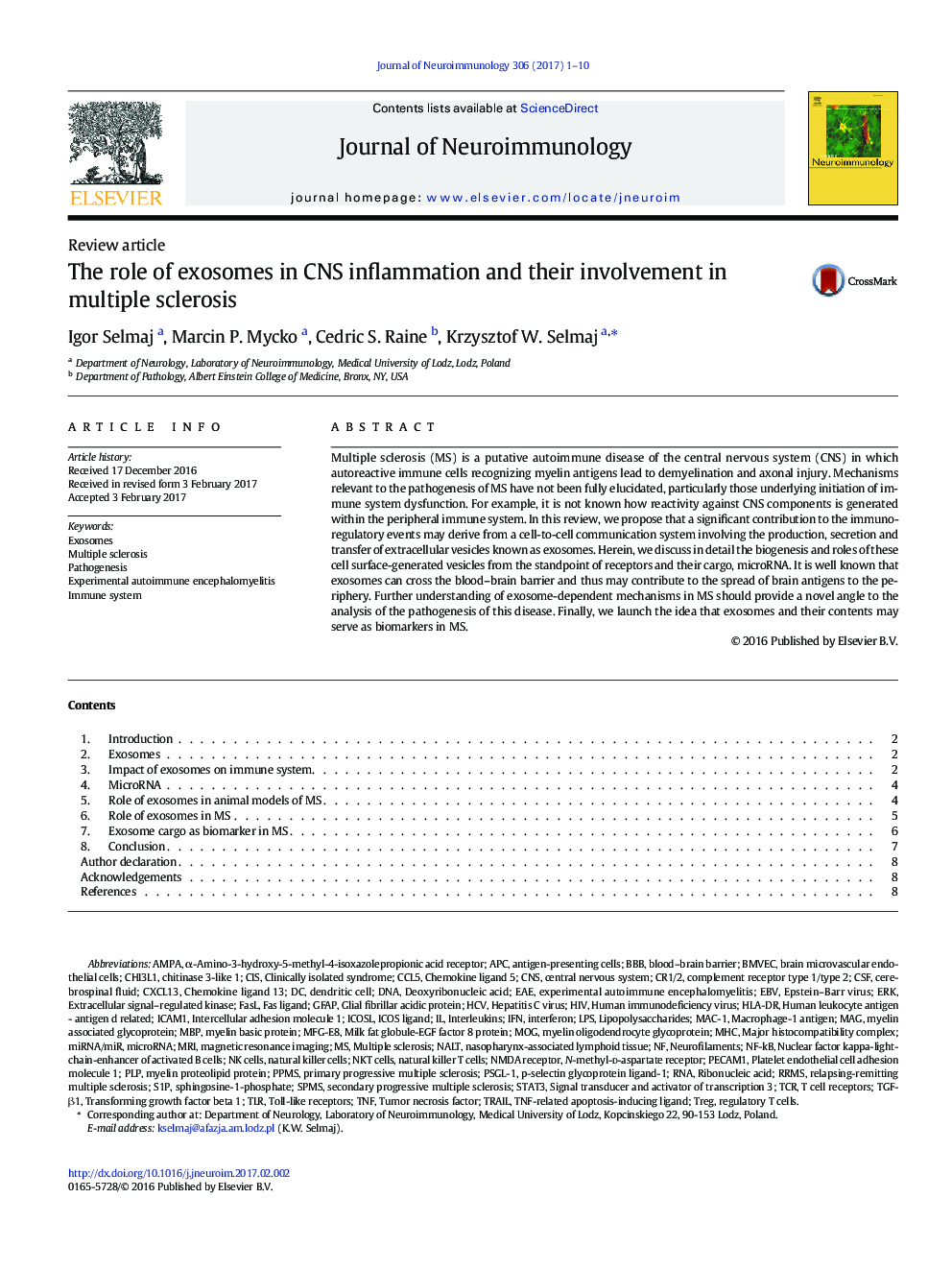| Article ID | Journal | Published Year | Pages | File Type |
|---|---|---|---|---|
| 5630264 | Journal of Neuroimmunology | 2017 | 10 Pages |
â¢Release of exosomes from the cell surface has been discovered as a new mechanism for cell-to-cell communication.â¢Analysis of circulating exosome cargo has revealed a role in immune system regulation.â¢Exosome contents may provide a new source for biomarkers in multiple sclerosis.
Multiple sclerosis (MS) is a putative autoimmune disease of the central nervous system (CNS) in which autoreactive immune cells recognizing myelin antigens lead to demyelination and axonal injury. Mechanisms relevant to the pathogenesis of MS have not been fully elucidated, particularly those underlying initiation of immune system dysfunction. For example, it is not known how reactivity against CNS components is generated within the peripheral immune system. In this review, we propose that a significant contribution to the immunoregulatory events may derive from a cell-to-cell communication system involving the production, secretion and transfer of extracellular vesicles known as exosomes. Herein, we discuss in detail the biogenesis and roles of these cell surface-generated vesicles from the standpoint of receptors and their cargo, microRNA. It is well known that exosomes can cross the blood-brain barrier and thus may contribute to the spread of brain antigens to the periphery. Further understanding of exosome-dependent mechanisms in MS should provide a novel angle to the analysis of the pathogenesis of this disease. Finally, we launch the idea that exosomes and their contents may serve as biomarkers in MS.
